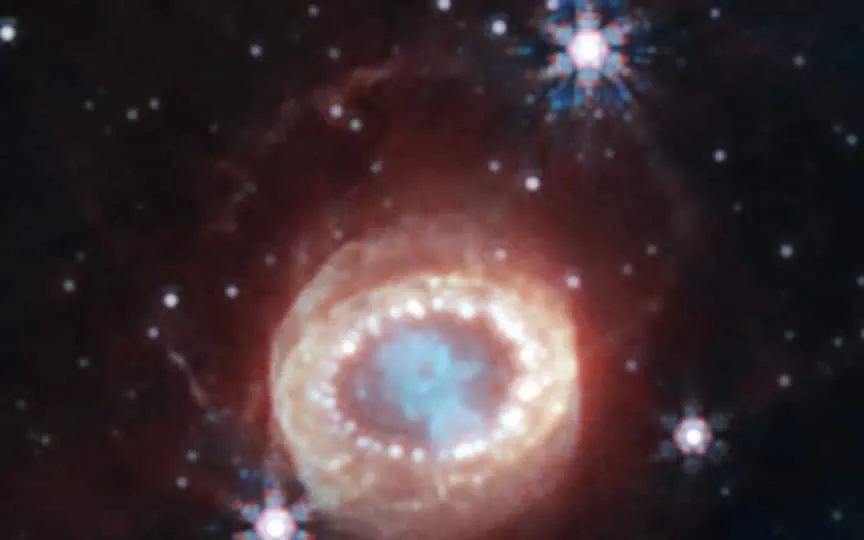Stunning Supernova Remnant Unveiled by NASA’s James Webb Telescope
The SN 1987A, a supernova remnant located in the Large Magellanic Cloud 168,000 light-years away, has been captured by NASA’s James Webb Space Telescope. The telescope’s NIRCam has revealed detailed structures that surpass previous observations. Through collaboration with the European Space Agency (ESA) and the Canadian Space Agency, NASA’s Webb Telescope aims to solve cosmic enigmas by utilizing high-resolution images. Take a look at the key points below:
1. Discovered in 1987, SN 1987A has been the subject of intense research for almost four decades, and has been studied at different wavelengths from gamma rays to radio waves.
2. The James Webb Space Telescope’s Near-Infrared Camera (NIRCam) has recently provided valuable information on the evolution of supernovae and their remnants.
3. The remarkable discovery is a dense, keyhole-shaped central structure filled with gas and dust ejected during the supernova explosion, which is opaque even to near-infrared light.
4. The central keyhole is surrounded by a luminous equatorial ring composed of material ejected tens of thousands of years before the supernova explosion and marked by bright hot spots where the shock wave has interacted with it.
5. Webb’s high-resolution images surpass the capabilities of previous telescopes such as the Hubble Space Telescope, the Spitzer Telescope, and the Chandra X-ray Telescope, providing unprecedented clarity and detail.
6. Despite decades of research, many mysteries remain, especially regarding post-supernova neutron star formation.
7. Webb will continue his observation of SN 1987A, using the Near Infrared Spectrograph (NIRSpec) and the Mid-Infrared Instrument (MIRI) to collect high-quality infrared data, improving our understanding of the newly discovered structures on the crescent moon.
8. The James Webb Space Telescope is a leading space science observatory with global collaborations including NASA, ESA (European Space Agency) and the Canadian Space Agency, and is working with other observatories to reveal new secrets about SN 1987A.
9. This telescope explores mysteries within our solar system, studies distant exoplanets, and dives into the origins and structures of the universe.
In summary, Webb’s groundbreaking observations of SN 1987A have opened new avenues for scientific research, providing unprecedented insights into the aftermath of supernovae and the evolution of celestial remnants.




